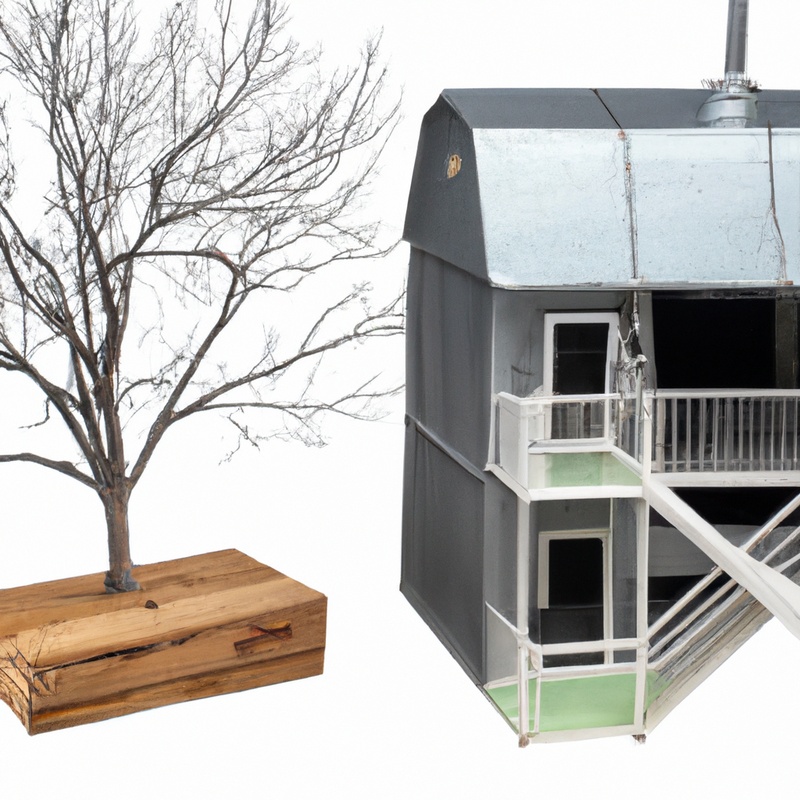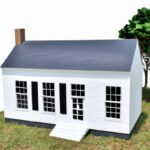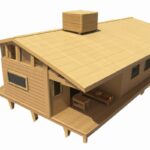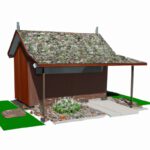Key Takeaways:
- Spray foam insulation provides the best overall performance in terms of energy efficiency and air sealing.
- Cellulose insulation is a sustainable and cost-effective option for tiny houses, offering good thermal performance.
- Reflective insulation is a viable choice for tiny houses in hot climates, as it reflects radiant heat.
- Natural insulation materials like sheep’s wool and cotton offer excellent thermal and moisture control properties.
Are you considering building or living in a tiny house? Well, let me tell you, insulation is something you don’t want to skimp on.
It’s the secret weapon that keeps your tiny home cozy in the winter, cool in the summer, and energy-efficient all year round.
But with so many insulation options out there, how do you choose the best one for your tiny house? In this article, I’ll share the factors you need to consider when selecting insulation, discuss popular options like spray foam, fiberglass, and sheep’s wool, weigh their pros and cons, and even provide recommendations for different climate scenarios.
Let’s dive in and find the perfect insulation for your tiny haven!
Insulation Option |
Advantages |
Disadvantages |
Cost |
Installation Difficulty |
|---|---|---|---|---|
Fiberglass |
Excellent thermal performance, widely available, relatively low cost |
Potential health risks if not handled properly, may require protective gear during installation |
$$ |
Moderate |
Spray Foam |
High insulation value, seals air leaks, reduces noise, moisture resistant |
Expensive, requires professional installation, potential health risks if not handled properly |
$$$$ |
Difficult |
Cellulose |
Eco-friendly, effective at reducing air leakage, affordable |
Potential settling over time, may require professional installation |
$$ |
Moderate |
Mineral Wool |
Excellent fire resistance, good thermal performance, sound absorption |
Can be more expensive than other options, may require professional installation |
$$$ |
Moderate |
Polystyrene (EPS/XPS) |
High R-value, moisture resistant, versatile |
Non-biodegradable, potential health risks if not handled properly |
$$ |
Moderate |
Factors to consider when choosing insulation for a Tiny House
Climate and location
When choosing insulation for your tiny house, it’s important to consider the climate and location where your house will be situated.
The climate will determine the temperature extremes that your insulation needs to handle, whether it’s hot summers or cold winters.
Additionally, the location can play a role in the amount of moisture or humidity your house may be exposed to, which can impact the effectiveness of certain insulation materials.
So, think about your specific climate and location needs to choose the best insulation option for your tiny house.
Energy efficiency goals
When it comes to insulation for a Tiny House, one of the key goals is to improve energy efficiency.
So what exactly do we mean by energy efficiency goals?
Well, it’s about reducing the amount of energy needed to heat or cool your home, which in turn reduces your carbon footprint and saves you money on energy bills.
The insulation you choose plays a crucial role in achieving these goals.
It helps to regulate the temperature inside your Tiny House, keeping it cool in the summer and warm in the winter.
This means less reliance on heating and cooling systems, and therefore, less energy consumption.
By selecting the right insulation material and ensuring proper installation, you can significantly improve the energy efficiency of your Tiny House.
So, when considering insulation options, keep energy efficiency goals in mind and choose materials that provide effective thermal insulation and air sealing properties.
Budget and cost-effectiveness
When considering insulation options for your tiny house, budget and cost-effectiveness are important factors to consider. You want to choose an insulation material that fits your budget while still providing efficient insulation.
Some insulation options, like fiberglass and cellulose, tend to be more budget-friendly compared to others like spray foam.
However, keep in mind that cost-effectiveness also depends on factors like installation and long-term energy savings. You may want to research and compare the upfront costs, performance, and longevity of different insulation materials to make an informed decision that suits your budget.

Available space for insulation
When choosing insulation for a Tiny House, it’s important to consider the available space.
Due to the limited size of a Tiny House, every inch counts.
You want to choose insulation materials that provide effective thermal performance while requiring minimal space.
Some insulation options, such as spray foam and rigid foam insulation, are known for their high insulation value with a thinner profile.
This allows you to maximize the available space for other purposes in your Tiny House.

Popular insulation options for Tiny Houses
Spray foam insulation
Spray foam insulation is a popular option for tiny houses due to its excellent insulation properties.
It is made by combining two components, which react and expand to fill gaps and cracks.
This creates a seamless, airtight barrier that helps to prevent heat loss and air infiltration.
Spray foam insulation also has the ability to provide both thermal and sound insulation, making it a versatile choice.
However, it can be more expensive compared to other insulation options and should be installed by professionals to ensure proper application.
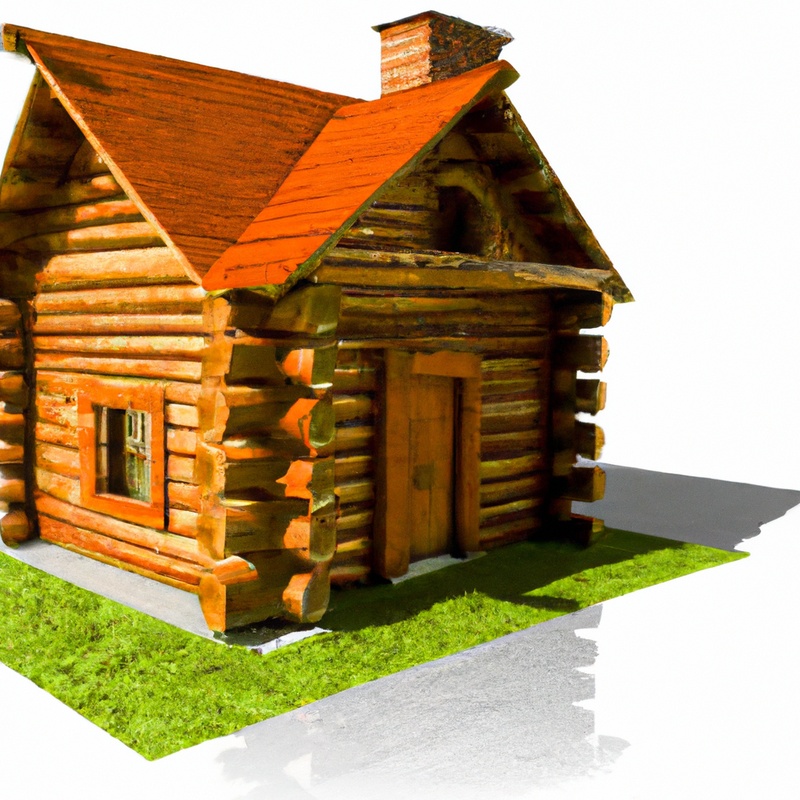
Fiberglass insulation
Fiberglass insulation is a popular choice for tiny houses. It is made from fine glass fibers that trap air, providing excellent thermal insulation.
One advantage of fiberglass insulation is its affordability compared to other options.
It is also widely available and easy to install. Fiberglass insulation is resistant to moisture and does not promote mold or mildew growth.
However, some people may be sensitive to the tiny fibers, so proper safety precautions should be taken during installation.
Overall, fiberglass insulation is a cost-effective and efficient choice for insulating your tiny house.
Sheep’s wool insulation
Sheep’s wool insulation is a popular choice for tiny houses due to its natural and sustainable properties. It provides excellent thermal insulation, helping to keep the interior warm in winter and cool in summer.
Sheep’s wool insulation is also effective at absorbing and releasing moisture, making it resistant to mold and mildew.
Additionally, it has natural fire-retardant properties. However, it can be more expensive compared to other insulation materials, and it requires careful installation to ensure optimal performance.
Overall, sheep’s wool insulation is a great option for eco-conscious tiny house owners seeking effective and sustainable insulation.
Cellulose insulation
Cellulose insulation is a popular option for tiny houses due to its affordability and eco-friendliness.
It is made from recycled materials, such as newspaper or cardboard, which are treated to be fire-resistant.
Some advantages of cellulose insulation include its ability to reduce heat transfer, soundproofing properties, and resistance to mold and pests.
However, it does have some disadvantages, such as the potential for settling and the need for professional installation.
Overall, cellulose insulation is a cost-effective and efficient choice for insulating tiny houses.
Rigid foam insulation
Rigid foam insulation is a popular choice for insulating tiny houses.
It’s a durable and effective option made from foam panels that provide excellent thermal resistance.
Here are some advantages and disadvantages to consider: Advantages:
- High R-value: Rigid foam insulation has a high R-value, meaning it provides excellent insulation and helps keep the interior temperature comfortable.
- Moisture resistance: It doesn’t absorb moisture, making it ideal for areas prone to humidity or moisture.
- Easy installation: Rigid foam insulation is relatively easy to install, especially in small spaces like tiny houses.
Disadvantages:
- Cost: Rigid foam insulation tends to be more expensive compared to other insulation options, which can be a drawback for those on a tight budget.
- Limited breathability: It doesn’t allow for air movement, which can be a disadvantage in certain climate conditions.
- Environmental impact: Some rigid foam insulation products contain materials that are harmful to the environment, so it’s important to choose eco-friendly options.
When choosing insulation for your tiny house, consider your specific needs, budget, and environmental preferences.
Rigid foam insulation can be a good choice if you prioritize thermal resistance and moisture resistance, but it’s essential to weigh the pros and cons and explore other options as well!
Reflective insulation
Reflective insulation is a popular option for Tiny Houses due to its ability to reflect heat rather than absorb it.
It consists of a layer of reflective material, such as aluminum foil, that helps to create a barrier against radiant heat transfer.
This type of insulation is lightweight, easy to install, and can be an effective choice in hot climates.
However, it may not provide sufficient insulation in colder climates or areas with high humidity.
Remember to consider your specific climate and insulation needs before choosing reflective insulation for your Tiny House.
Pros and cons of each insulation option
Spray foam insulation
Spray foam insulation is a popular choice for tiny houses due to its excellent insulation properties.
It is made by mixing two chemicals that expand and harden when sprayed onto surfaces, creating a thermal barrier.
The foam fills gaps and cracks, providing an airtight seal, which helps to prevent heat loss or gain.
Additionally, spray foam insulation acts as a barrier against moisture and can enhance the structural integrity of a tiny house.
It is important to hire a professional for installation to ensure proper application and effectiveness.
Advantages
When considering insulation options for a Tiny House, it’s important to understand the advantages of each.
Here are some advantages of popular insulation options:
- Spray foam insulation: Provides excellent thermal insulation and air sealing, reducing energy consumption and drafts.
- Fiberglass insulation: Offers good thermal insulation and is affordable, readily available, and easy to install.
- Sheep’s wool insulation: Naturally fire-resistant, sustainable, and effective at regulating moisture and temperature.
- Cellulose insulation: Made from recycled materials, it’s eco-friendly, effective at reducing noise, and has good thermal performance.
- Rigid foam insulation: Provides high thermal resistance and is moisture-resistant, making it suitable for areas prone to moisture.
- Reflective insulation: Reflects radiant heat, keeping the interior cooler in hot climates and reducing energy usage.
These advantages can help you make an informed decision based on your specific needs and preferences for your Tiny House.
Disadvantages
There are a few disadvantages to consider when it comes to insulation options for a Tiny House.
Here are some possible drawbacks for each option:
- Spray foam insulation: It can be expensive upfront and may require professional installation. Additionally, some spray foam insulation contains chemicals that can be harmful if not properly handled.
- Fiberglass insulation: Although it is affordable, fiberglass can pose health risks if the tiny house is not properly sealed. It also has low resistance to moisture and can lose its effectiveness over time.
- Sheep’s wool insulation: While it is a natural and sustainable option, sheep’s wool insulation can be expensive. It may also attract pests if not properly protected.
- Cellulose insulation: Although it is eco-friendly and has good thermal performance, cellulose insulation can settle and compact over time, reducing its effectiveness. It is also susceptible to mold and pest infestations if exposed to moisture.
- Rigid foam insulation: Rigid foam is effective at insulating, but it can be costly and difficult to work with due to its rigidity. It may also release toxic gases if not properly installed or exposed to fire.
- Reflective insulation: While it can be effective in certain climates, reflective insulation alone may not provide sufficient insulation in colder conditions. It also requires proper installation to avoid air gaps.
These disadvantages should be carefully considered when choosing the best insulation option for your Tiny House, ensuring that your decision aligns with your budget, climate, and other specific needs.
Fiberglass insulation
Fiberglass insulation is a popular option for insulating Tiny Houses.
It is made from glass fibers and is known for its affordability and effectiveness in preventing heat transfer.
The insulation is lightweight, easy to install, and provides good thermal insulation.
Additionally, fiberglass insulation is resistant to moisture and does not attract pests.
However, it can cause skin irritation if not handled properly, so wearing protective clothing and a mask is recommended during installation.
Overall, fiberglass insulation is a reliable choice for insulating a Tiny House.
Advantages
Spray foam insulation offers excellent thermal insulation properties, reducing energy consumption and lowering utility bills. It can fill even the smallest crevices, creating an airtight seal and improving the overall energy efficiency of your tiny house.
Fiberglass insulation is easy to install, affordable, and widely available.
It provides good thermal insulation and can help reduce noise transmission. Sheep’s wool insulation is a natural and sustainable option, offering excellent thermal performance and sound absorption.
Cellulose insulation is environmentally friendly, made from recycled materials, and provides good thermal and acoustical insulation.
Rigid foam insulation is lightweight, durable, and resists moisture, perfect for tiny houses with limited space. Reflective insulation helps to reflect heat, keeping your tiny house cool in hot climates.
Disadvantages
Each insulation option for a Tiny House has its disadvantages. Spray foam insulation can be expensive and may require professional installation.
Fiberglass insulation can be itchy and may not be as effective in extreme temperatures.
Sheep’s wool insulation is costly and may attract pests. Cellulose insulation can settle over time and lose effectiveness.
Rigid foam insulation can be bulky and difficult to install.
Reflective insulation may not be suitable for all climates and may require additional insulation. It’s important to consider these disadvantages when choosing the best insulation option for your Tiny House.
Sheep’s wool insulation
Sheep’s wool insulation is a natural and sustainable option for your tiny house.
It has excellent thermal performance, helping to keep your space warm in colder climates.
Sheep’s wool insulation is also naturally breathable, allowing moisture to escape and reducing the risk of mold or mildew.
It is also a great choice for soundproofing, reducing external noise.
Additionally, sheep’s wool insulation is fire-resistant and has a long lifespan.
However, it is important to consider the higher initial cost and potential for pest attraction.
Advantages
Spray foam insulation offers excellent thermal performance and air sealing capabilities, reducing energy consumption and utility costs. It can conform to irregular shapes and hard-to-reach areas, ensuring full coverage.
Fiberglass insulation is affordable and widely available, providing good thermal and sound insulation.
Sheep’s wool insulation is sustainable, natural, and offers superior moisture absorption and fire resistance. Cellulose insulation is eco-friendly, made from recycled paper and possesses excellent insulation properties.
Rigid foam insulation provides high thermal resistance and can be used in both hot and cold climates.
Reflective insulation reflects heat away, keeping the indoor temperature comfortable.
Disadvantages
Disadvantages:
- Spray foam insulation can be expensive compared to other options and may require professional installation.
- Fiberglass insulation can cause skin irritation and requires careful handling to avoid exposure to tiny glass fibers.
- Sheep’s wool insulation may be more expensive than synthetic options and may require extra precaution against pests.
- Cellulose insulation may settle over time and lose its effectiveness if not installed properly.
- Rigid foam insulation can be bulky and take up valuable space in a tiny house.
- Reflective insulation may not be as effective in colder climates and may require additional insulation for optimal performance.
Cellulose insulation
Cellulose insulation is a popular option for tiny houses. It is made from recycled materials such as newspaper and treated with fire retardants.
This type of insulation is environmentally friendly and provides effective thermal performance.
It can be blown into wall cavities, attic spaces, and floors, filling any gaps and creating a tight seal. The dense nature of cellulose insulation also helps with soundproofing.
However, it may be more expensive than other options, and proper installation is important to avoid issues like settling or moisture retention.
Advantages
Advantages of different insulation options for a Tiny House vary.
Spray foam insulation offers excellent thermal insulation and air sealing properties.
Fiberglass insulation is cost-effective and easy to install, while sheep’s wool insulation is environmentally friendly and can absorb moisture without losing its insulating properties.
Cellulose insulation is made from recycled materials and provides good soundproofing.
Rigid foam insulation offers high thermal resistance and moisture resistance.
Reflective insulation reflects heat and can be used to control temperature.
Different insulation options have their own unique benefits to suit your specific needs.
Disadvantages
When it comes to insulation options for tiny houses, it’s important to consider the disadvantages of each option.
Here are some potential drawbacks to keep in mind:
- Spray foam insulation: While it provides excellent insulation and air sealing properties, spray foam can be expensive and may require professional installation. It can also release harmful chemicals during the application process.
- Fiberglass insulation: Although widely available and affordable, fiberglass insulation can cause skin irritation if not properly handled. It may also let in drafts if not installed properly, leading to reduced energy efficiency.
- Sheep’s wool insulation: While a sustainable and natural option, sheep’s wool insulation can be more expensive than other alternatives. It may also be less effective in humid environments and can harbor mold or pests if not properly maintained.
- Cellulose insulation: Cellulose insulation, made from recycled paper, can settle over time and lose its insulating properties. It may require additional fire-retardant treatments to meet building codes.
- Rigid foam insulation: Rigid foam insulation is durable and provides excellent thermal resistance. However, it can be more expensive than other options and may require specialized tools for installation.
- Reflective insulation: Reflective insulation reflects heat, making it suitable for hot climates. However, it alone may not provide sufficient insulation and may need to be supplemented with other materials.
Remember, the best insulation option for your tiny house depends on factors like climate, energy efficiency goals, budget, and available space.
It’s important to weigh the advantages and disadvantages of each option to make an informed decision.
Rigid foam insulation
Rigid foam insulation is a popular choice for insulating Tiny Houses. It’s made from polystyrene or polyurethane and comes in rigid panels or boards.
Advantages of rigid foam insulation include excellent thermal resistance, high energy efficiency, and moisture resistance.
It’s also lightweight and easy to install. However, there are a few disadvantages to consider.
Rigid foam insulation can be more expensive compared to other options.
It may also release toxic gases if not properly sealed. Overall, rigid foam insulation is a great option for Tiny Houses if you prioritize energy efficiency and moisture resistance.
Just make sure to handle and install it safely to avoid any health risks.
Advantages
There are several advantages to using different types of insulation in a Tiny House. Here are some key benefits of each option:
1. Spray foam insulation:
– Provides excellent air sealing, preventing drafts and reducing energy loss. – Has a high insulation value, offering superior thermal performance.
– Can be applied to irregular surfaces and hard-to-reach areas.
2. Fiberglass insulation:
– Cost-effective and widely available. – Offers good thermal performance and sound absorption.
– Easy to install, especially in pre-cut batts or rolls.
3. Sheep’s wool insulation:
– Naturally fire-resistant and biodegradable. – Able to absorb and release moisture, regulating humidity levels.
– Provides excellent thermal and sound insulation properties.
4. Cellulose insulation:
– Made from recycled materials, reducing environmental impact. – Excellent at reducing air infiltration and improving energy efficiency.
– Can be blown into tight spaces or used in wall cavities.
5. Rigid foam insulation:
– Provides high R-value per inch, maximizing thermal efficiency. – Resistant to moisture and mold growth.
– Adds structural strength to walls.
6. Reflective insulation:
– Reflects radiant heat, keeping the interior cool in hot climates. – Easy to install and can be used in conjunction with other insulation types.
– Durable and long-lasting.
It’s important to consider factors such as climate, energy efficiency goals, budget, and available space when choosing the best insulation option for your Tiny House. With these advantages in mind, you can make an informed decision that suits your specific needs.
Disadvantages
Each insulation option for a Tiny House comes with its own set of disadvantages. Spray foam insulation, while highly effective, can be expensive and difficult to install properly.
Fiberglass insulation may irritate the skin and respiratory system if not properly handled.
Sheep’s wool insulation is a sustainable option but can be costly and attract pests. Cellulose insulation, although environmentally friendly, can settle and lose its effectiveness over time.
Rigid foam insulation is not as eco-friendly and may require additional ventilation.
Reflective insulation may not be as effective in extreme temperatures. It’s important to weigh the pros and cons to find the best insulation for your specific needs.
Reflective insulation
Reflective insulation is a popular choice for insulating tiny houses.
It consists of a reflective material, usually aluminum, that helps to reflect heat and keep the interior temperature regulated.
Here are the advantages of using reflective insulation:
- It is lightweight and thin, making it easy to install and reducing the overall weight of the tiny house.
- It reflects radiant heat, which can help keep the interior cool in hot climates.
- It can also help retain heat in colder climates by reflecting it back into the space.
However, there are some considerations to keep in mind when using reflective insulation:
- It is not as effective at insulating against air leaks and drafts compared to other insulation options.
- It may not be suitable for all climates, particularly in areas with extreme temperatures.
Overall, reflective insulation can be a good choice for tiny houses, especially in moderate climates.
Advantages
Advantages of each insulation option vary, so let’s take a look at some of them:
1. Spray foam insulation:
– Excellent air sealing properties, reducing energy loss and drafts.
– Provides high R-value and thermal efficiency.
– Helps prevent moisture infiltration and mold growth.
2. Fiberglass insulation:
– Affordable option with good thermal performance.
– Easy to install and readily available.
– Non-combustible and resistant to pests.
3. Sheep’s wool insulation:
– Natural and sustainable material.
– Effective at regulating temperature and humidity.
– Resistant to mold, mildew, and pests.
4. Cellulose insulation:
– Made from recycled paper, an eco-friendly choice.
– Good thermal and sound insulation properties.
– Provides effective air sealing when installed properly.
5. Rigid foam insulation:
– High R-value per inch, providing excellent insulation.
– Lightweight and easy to handle during installation.
– Resistant to moisture and mold growth.
6. Reflective insulation:
– Reflects radiant heat, keeping the interior cooler in hot climates.
– Lowers energy consumption for cooling.
– Flexible and easy to install in tight spaces.
These advantages should help you consider which insulation option suits your needs and preferences for your tiny house.
Disadvantages
Every insulation option has its drawbacks, and it’s important to consider them when choosing for a Tiny House.
- Spray foam insulation can be expensive and may require professional installation.
- Fiberglass insulation can cause skin irritation and requires the use of protective gear during installation.
- Sheep’s wool insulation is more expensive compared to other options and may attract pests.
- Cellulose insulation can settle over time, reducing its effectiveness.
- Rigid foam insulation can be challenging to cut and shape, and it may degrade over time.
- Reflective insulation is less effective in colder climates and requires proper installation to prevent heat buildup.
Best insulation options for different Tiny House scenarios
Insulation for cold climates
Insulating a Tiny House for cold climates is crucial to keep the interior warm and comfortable.
When it comes to insulation options, there are a few that work well in cold climates.
Sheep’s wool insulation is a popular choice as it provides excellent thermal insulation and retains heat effectively.
Additionally, rigid foam insulation and cellulose insulation are also suitable options for cold climates.
These insulation materials offer good thermal resistance and help to prevent heat loss.
Reflective insulation can be used in combination with other insulation materials to enhance their performance in cold climates.
Insulation for hot climates
Insulating a Tiny House in a hot climate is essential to keep the interior comfortable and reduce energy consumption. When it comes to insulation for hot climates, there are a few key factors to consider.
Firstly, choose an insulation material with a high R-value, which indicates its ability to resist heat transfer.
Secondly, opt for insulation that has a reflective surface to deflect sunlight. Lastly, ensure proper insulation installation to eliminate any gaps or air leaks.
By addressing these factors, you can create a well-insulated Tiny House that stays cool even in hot weather.
Insulation for damp/moisture-prone areas
When it comes to insulation for damp or moisture-prone areas in your Tiny House, there are a few options to consider.
One effective choice is closed-cell spray foam insulation, as it creates a barrier that prevents moisture from entering the walls.
Another option is rigid foam insulation, which is resistant to water and can help keep your Tiny House dry.
Additionally, using a vapor barrier, such as a plastic sheet, can further protect against moisture.
Overall, choosing insulation that is water-resistant and taking steps to minimize moisture penetration will be essential for these areas.
Insulation for noise reduction
Insulation is not only important for regulating temperature in a Tiny House, but it can also be effective in reducing noise levels.
When it comes to noise reduction, there are a few insulation options to consider.
One popular choice is cellulose insulation, which is made from recycled newspapers and has excellent sound-absorbing properties.
Another option is acoustic foam insulation, specifically designed to dampen sound waves and reduce noise.
Both of these options can help create a quieter and more peaceful living environment inside your Tiny House.
Final Verdict
When choosing insulation for a Tiny House, several factors should be considered including climate, energy efficiency goals, budget, and available space. Some popular insulation options for Tiny Houses include spray foam, fiberglass, sheep’s wool, cellulose, rigid foam, and reflective insulation.
Each option has its own pros and cons.
It is important to select the insulation that aligns with the specific needs of your Tiny House. For cold climates, spray foam or sheep’s wool insulation may be the best choice, while in hot climates, reflective insulation can help keep the interior cool.
In damp areas, moisture-resistant options like rigid foam are recommended, and for noise reduction, cellulose insulation can provide sound insulation.
Overall, it is important to evaluate the requirements of your Tiny House and choose an insulation option that offers the best combination of performance, cost-effectiveness, and sustainability.
